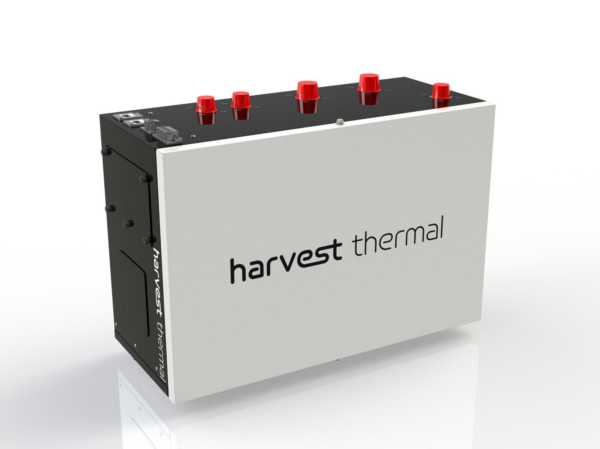E3 Publishes New Whitepaper Citing CalFlexHub Research

A team of authors from E3 has released a whitepaper titled “Rate Design for the Energy Transition: Getting the Most out of Flexible Loads on a Changing Grid,” which addresses the need for updated retail rate designs in the evolving electric system. As the transition to renewable energy sources progresses, current customer electric rates no longer reflect the true costs and hinder the adoption of electric vehicles and building technologies. The authors cite research happening in the CalFlexHub as illustrative of what customer response could look like.
The whitepaper proposes a multi-part dynamic rate design that aligns customer responses with grid needs and supports decarbonization goals. It includes three components: a dynamic hourly energy rate, capacity components to incentivize load reduction during congested hours, and a non-bypassable customer charge for cost recovery and equity. The authors emphasize the importance of efficient customer response to price signals and the adoption of new communication technologies and distributed energy resources.
CalFlexHub Research Highlighted at 2023 ACEEE

Peter Grant, Senior Scientific Engineering Associate at Lawrence Berkeley National Laboratory (Berkeley Lab), recently presented at the 2023 ACEEE Hot Water & Hot Air Forum offering a look at his work on price and load responsive controls for heat pump hot water heaters (HPWHs). The hot water industry’s recent adoption of communication capabilities and the CTA-2045 protocol enable grid operators to perform load shifting with HPWHs. Prior projects studying load shifting in homes have shown 65-81% reductions in 4-9 p.m. electricity consumption but increased operating costs for homeowners. Berkeley Lab has developed an algorithm that generates cost-reducing CTA-2045 command schedule in response to different a) groups of occupant behavior profiles and b) price structures (e.g., PG&E rates, SCE rates, CalFlexHub’s highly dynamic prices). Aggregators using the algorithm will obtain a control schedule customized to their water heaters and price schedule, simultaneously a) supporting grid flexibility and b) reducing HPWH operating costs. Simulations on a fleet of 148 HPWHs using the Flexible Heat Pump Water Heater Performance Predictor, which closely matches the performance of a manufacturer’s HPWHs, show operating cost savings of 15-29%, peak period consumption reductions of 75-77%, and mid-day consumption increases of 63-102%. Ongoing research efforts are focused on creating a methodology for adding HPWHs in the field to groups enabling field deployment.
Partner Spotlight: Harvest Thermal – Optimizing Home Heating and Hot Water with Dynamic Price Response
Harvest Thermal is revolutionizing the way we heat our homes by combining cutting-edge technology with thermal energy storage. The core of the system is the highly efficient SANCO2 heat pump, which is complemented by an intelligent controller: Harvest Pod. Together, they optimize heat pump operation for energy price, emissions, and efficiency—while always delivering superior comfort—resulting in reduced energy costs and emissions compared to conventional gas furnaces and water heaters or a heat pump alone.
While Harvest Thermal’s technology has already made a significant impact on energy consumption and emissions, the load shifting capabilities can be advanced. In collaboration with the CalFlexHub project, they have developed and implemented a price signal optimization module. This innovative addition allows the load shifting algorithm to optimize for dynamic price signals, enabling homeowners, aggregators, and utilities to shift nearly the entire home heating and hot water load off peak.
Homeowners are not making decisions other than opting into the price signal. Load shifting is entirely transparent for them, driven by the price and emissions signals.
To fully leverage the potential of load shifting for heating and hot water, customers need incentives such as dynamic rates and performance-based rebates. As Harvest Thermal prepares to bring its dynamic price response capability to market, it is crucial for customers, aggregators, and utilities to understand these new opportunities.
To validate the effectiveness of the new dynamic price response feature, Harvest Thermal conducted testing in two real homes during winter 2023. The results showcased the system’s ability to optimize energy consumption based on hourly variations in prices on the local grid. Early results show that the heat pump operation has been effectively shifted to the middle of the day when solar energy is abundant on the grid.
Harvest Thermal is working towards commercializing the dynamic price response capability, ensuring it can be seamlessly deployed for both current and future customers. This is a milestone for Harvest Thermal as they continue to innovate in sustainable and cost-effective home heating and hot water solutions.
Join the FlexTech Roundtable: Engage, Learn, and Collaborate with CalFlexHub

The first FlexTech Roundtable is happening June 22, 11 a.m.-12 p.m. PDT / 2 -3 p.m. EDT. This webinar series and virtual roundtable highlights innovators and other players in the CalFlexHub’s ecosystem advancing market adoption of automated load flexibility technologies and other related topics and trends. It will be a great opportunity to increase the visibility of your business’s interest in load flexibility as we are looking for speakers at future webinars. In addition, the CalFlexHub team will offer the latest program updates.



